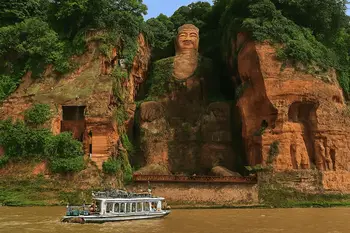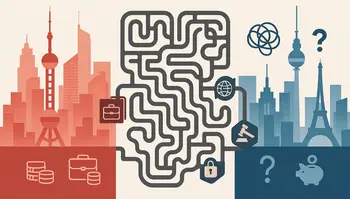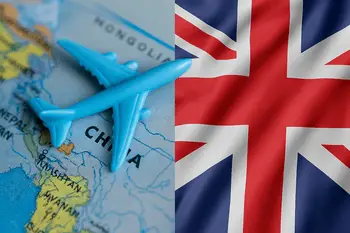
Chengdu is an ideal base for short adventures that range from ancient engineering marvels and UNESCO sites to scenic mountains, historic towns, and cultural highlights.
This guide lists the best day trips from Chengdu, how to get there, sample itineraries, travel tips, and a comparison table to help you choose the right trip for your interests, mobility, and time of year.
How to choose the right day trip
Decide using these factors:
- Travel time and transport mode: train, bus, private car, or guided tour.
- Activity level: walking, hiking, cultural sightseeing, or relaxed strolling.
- Interests: natural scenery, history and temples, pandas and wildlife, food, or architecture.
- Season and weather: mountain trips are best in clear weather; river or canyon trips may be affected by rains.
Quick comparison at a glance
| Destination | Travel time one-way | Best for | Difficulty | Typical start time |
|---|---|---|---|---|
| Leshan Giant Buddha | 1.5–2 hours | Iconic UNESCO Buddha, river views | Low | 7:30–8:30 AM |
| Mount Qingcheng + Dujiangyan | 1–1.5 hours | Taoist temples; engineering marvel | Moderate | 7:30 AM |
| Dujiangyan Irrigation System only | 1–1.5 hours | Ancient hydraulic engineering | Low | 8:00 AM |
| Huanglongxi Ancient Town | 1–1.5 hours | Ancient streets, teahouses | Low | 9:00 AM |
| Mount Emei (partial, to Baoguo Temple) | 2 hours | Temple culture, mountain scenery | Moderate | 7:00 AM |
| Chengdu Panda Base | 30–45 minutes | Giant pandas, great for families | Low | 7:30 AM |
| Wenshu Monastery + Jinli + Kuanzhai | In-city (no travel) | Culture, tea houses, snacks | Low | 9:00 AM |
| Longmen Mountain scenic areas | 1.5–2 hours | Waterfalls and hiking | Moderate | 8:00 AM |
| Mingshan Tengwang (tea terraces) | 1.5–2 hours | Tea culture, rural scenery | Low–Moderate | 8:30 AM |
| Hanyuan (Taoist/river valleys) | 2–3 hours | Remote scenery, rivers | Moderate | 7:00 AM |
| Mount Funiu (river gorges) | 2+ hours | Canyon views, photo ops | Moderate | 7:00 AM |
| Day cycling or food tour around Chengdu suburbs | 30–90 minutes | Food and local life | Low | 9:00 AM |
Sources: Trip101, MyTravelBuzzg.
When to start and practical timing
Start early for any site outside the city to beat traffic and crowds.
For popular destinations like the Leshan Giant Buddha and the Chengdu Research Base of Giant Pandas, arrive as gates open (usually 7:30–8:30 AM) to see animals at their most active and to avoid long lines.
Mountain destinations benefit from clear morning weather and more stable conditions for hiking.
Transport options and booking tips
Train China’s high-speed rail network connects Chengdu with many nearby cities; Dujiangyan and Leshan are accessible via regular and high-speed services.
Trains are efficient and comfortable; book tickets in advance during holiday seasons.
Bus and long-distance coaches Buses depart from Chengdu’s main coach stations to smaller towns and scenic areas.
Buses are frequent and cost-effective but can be slower than trains due to traffic.
Private car, taxi, or driver-for-hire Hiring a private car or joining a small-group guided tour is the most flexible option for day trips and can be cost-effective if you’re traveling with two or more people.
Drivers can save time between dispersed attractions.
Guided tours One-day guided tours often combine transport, entrance fees, and a local guide; they’re convenient for first-time visitors who prefer a structured itinerary.
Group tours can be faster for covering more ground; private tours give flexibility for pacing and photo stops.
Detailed itineraries and tips for the top day trips
Leshan Giant Buddha (best for iconic sights and photography)
Why go?
The Leshan Giant Buddha is the world’s largest stone Buddha carved into a cliff face and is a UNESCO site; it offers a dramatic example of Tang-dynasty sculpture and river engineering. Visiting gives insight into regional history and affords striking riverside views.
How to get there?
Take a high-speed train or regular train to Leshan or join a day tour; buses and private car transfers are also available. Travel time from Chengdu is approximately 1.5–2 hours each way depending on traffic.
Sample itinerary
- 07:30 Depart Chengdu.
- 09:30 Arrive Leshan; coffee and quick snack.
- 10:00 Board a short boat ride to view the Buddha from the river for the best photographic angle.
- 11:00 Walk the cliffside path for close-up views; visit nearby temples and viewing platforms.
- 12:30 Lunch at a local restaurant with Sichuan specialties.
- 14:00 Optional short visit to Lingyun Temple or local markets.
- 15:30 Depart for Chengdu, arrive by early evening.
Tips: Wear comfortable shoes for walking steps and uneven paths; bring sun protection in summer and a light jacket in cooler months.
Mount Qingcheng and Dujiangyan Irrigation System (best combined cultural and engineering day)
Why go?
Mount Qingcheng is one of China’s most important Taoist mountains, known for serene temples immersed in forest. Dujiangyan is a 2,000-year-old irrigation system still in use, celebrated for its ingenious engineering and UNESCO status.
How to get there?
A short high-speed train or bus ride to Dujiangyan city, then local transport to both sites. Many travelers visit both in one day due to proximity.
Sample itinerary
- 07:30 Depart Chengdu.
- 09:00 Arrive Dujiangyan; start with Dujiangyan Irrigation area to understand the engineering and history.
- 11:30 Lunch near the river.
- 13:00 Transfer to Mount Qingcheng base; take the cable car for faster access to key temples.
- 15:30 Explore Taoist temples and shaded trails.
- 17:00 Return to Chengdu.
Tips: Bring insect repellent for forest trails; wear layers because mountain temperatures can differ from Chengdu.
Chengdu Research Base of Giant Panda Breeding (best for families and animal lovers)
Why go?
Iconic chance to observe giant pandas in a conservation center committed to research and breeding; morning is the best time for panda activity.
How to get there?
A short drive (about 30–45 minutes) from central Chengdu by taxi or tour bus.
Sample itinerary
- 07:30–08:00 Arrive at opening to see pandas during feeding times.
- 09:30 Walk the site, visit red pandas and educational exhibits.
- 11:30 Return to Chengdu for lunch.
Tips: Book tickets ahead for peak seasons and arrive early when pandas are most active. Bring cash or card for small purchases; keep noise low to respect the animals.
Huanglongxi Ancient Town (best for a relaxed cultural stroll)
Why go?
Huanglongxi offers narrow lanes, old buildings, teahouses, and a slower pace—perfect for sampling local snacks and capturing traditional architecture without long travel.
How to get there?
About 1–1.5 hours by car or bus from Chengdu.
Sample itinerary
- 09:00 Depart Chengdu.
- 10:30 Arrive Huanglongxi; wander the cobbled streets and visit mills and temples.
- 12:30 Lunch at a riverside teahouse.
- 14:00 Shop for local handicrafts and snacks.
- 16:00 Return to Chengdu.
Tips: Try local street snacks and carry small change; explore side alleys for quieter photo opportunities.
Mount Emei (short visit to Baoguo Temple or limited mountain sections)
Why go?
Mount Emei is a major Buddhist mountain with temples and dramatic scenery; a full summit trip takes more than one day, but visiting Baoguo Temple and lower scenic areas is a doable day trip.
How to get there?
Around 2 hours by car or train to Emeishan city, then local transit up to the Baoguo Temple area.
Sample itinerary
- 07:00 Early departure.
- 09:30 Arrive Baoguo Temple; explore temple grounds and museums.
- 11:30 Take cable car to a mid-mountain section if time allows for scenery and temple visits.
- 15:00 Begin return to Chengdu.
Tips: Avoid full-mountain summit attempts as a day trip; check cable car schedules and weather.
In-city cultural loops (Wenshu Monastery, Kuanzhai Alley, Jinli, and tea houses)
Why go?
For visitors who prefer minimal travel time, Chengdu’s city center offers rich cultural experiences including historic alleys, famous tea houses, and temple visits.
How to plan?
Design a slow-paced day: morning at Wenshu Monastery, lunch in Kuanzhai or Jinli Old Street, afternoon tea at a traditional teahouse, evening Sichuan opera or hotpot.
Tips: Reserve hotpot spots during peak hours and follow local etiquette at tea houses.
Practical packing checklist for day trips
- Comfortable walking shoes
- Small daypack and water bottle
- Light rain jacket and sun protection
- Portable power bank and camera
- Small cash and identification
- Any snacks, medications, or personal items
Accessibility and family travel notes
Many major attractions have ramps and accessible paths near entrances, but cliffside walkways and ancient towns often include steps and uneven surfaces.
Families with small children should prioritize easier sites like the panda base, Huanglongxi, or in-city cultural routes.
For mobility limitations, choose destinations with cable cars, short flat walks, or guided transfers that minimize walking.
Food and culinary recommendations on day trips
Sichuan cuisine is famous for bold flavors and spiciness, but many restaurants will accommodate milder requests.
Popular regional specialties to try on day trips include:
- Mapo tofu
- Sichuan hotpot (for later in the day)
- Local river fish dishes near Leshan
- Tea and cold snacks in Huanglongxi
Safety and seasonal considerations
- Summer (June–August): hot and humid with occasional heavy rains; mountains cooler but unpredictable weather.
- Autumn (September–November): typically the best season for clear skies and stable conditions.
- Winter (December–February): chillier in mountains; dress in layers.
- Major Chinese holidays (Spring Festival, National Day) see heavy local travel and higher prices; book transport and tickets in advance.
Sample one-week Chengdu plan mixing day trips
- Day 1: Chengdu city — Wenshu Monastery, Kuanzhai Alley, Sichuan Opera at night.
- Day 2: Chengdu Panda Base in the morning; Jinli Old Street in the afternoon.
- Day 3: Leshan Giant Buddha full-day trip.
- Day 4: Mount Qingcheng and Dujiangyan combined day trip.
- Day 5: Huanglongxi Ancient Town for a relaxed cultural day.
- Day 6: Mount Emei lower visits or local hiking near Chengdu.
- Day 7: Food tour and souvenir shopping before departure.
Budgeting estimates
- Panda Base: low–moderate (entrance fee plus transport).
- Leshan/Ground transport: moderate (train or private car, plus boat option).
- Mount Qingcheng + Dujiangyan: moderate.
- Guided day tours: vary widely; private tours cost more but save time and stress.
Responsible travel and cultural respect
Respect temple etiquette: modest clothing, quiet voices, no flash photography where prohibited.
Support local businesses by buying handicrafts and trying regional food.
Follow posted rules at conservation centers for animal welfare.


